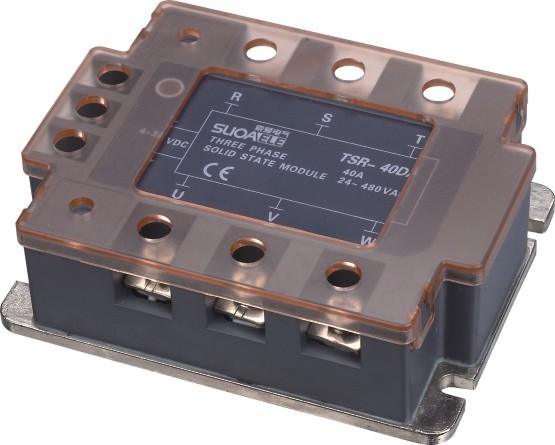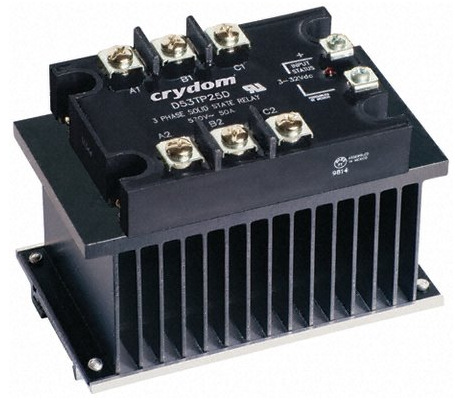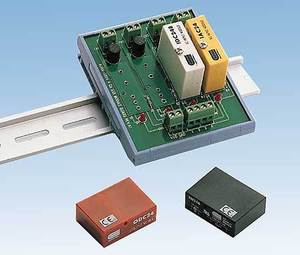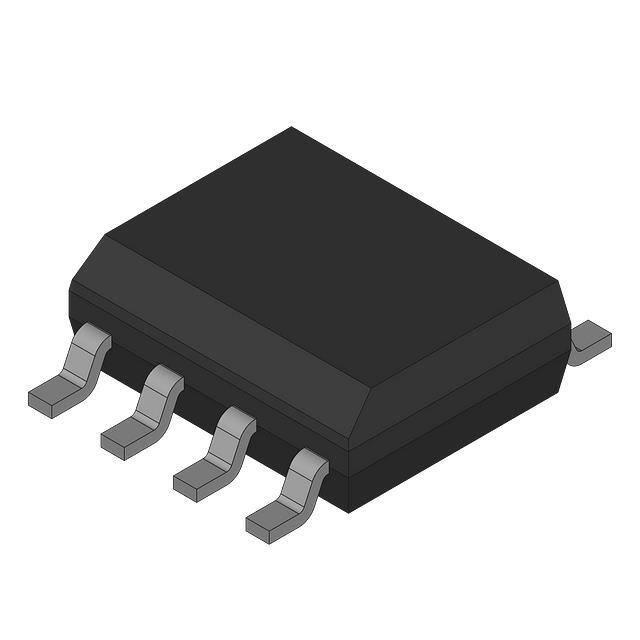Solid-State Relays vs. Mechanical Relays: Which is the Better?
Two stars of the relay family
In the vast arena of electrical control, relays are undoubtedly a very critical role. They are like loyal guards in the circuit world, silently guarding the stability and safety of the circuit. Today, we will focus on two star members of the relay family - solid-state relays and mechanical relays.
Imagine that in a complex industrial production workshop, various large-scale equipment are roaring and running, and the stable operation of these equipment is inseparable from precise circuit control. Or in a smart home environment, the intelligent control of lighting, electrical appliances and other equipment also requires reliable circuit control components. Solid-state relays and mechanical relays are the core components that play an important role in these scenarios. So, what is the difference between the two? Who can be better in different application scenarios? Next, let's explore it in depth.

The working principle is revealed
(I) Solid-state relay: electronic magic without contact
Solid-state relays are like a mysterious electronic magician, controlling the on and off of circuits in a unique way without contact. Its internal structure is exquisite, mainly composed of several key parts: input circuit, isolation circuit, drive circuit and output circuit. When an external control signal, such as a voltage signal or a current signal, is transmitted to the input circuit, it is like opening the curtain of a magic ritual.
After receiving the signal, the input circuit will quickly detect whether the signal meets certain conditions. Once it meets the conditions, it will output a control signal. This control signal then enters the isolation circuit. The isolation circuit is like a loyal guard, isolating the input circuit from the output circuit at the electrical level, which can not only protect the input circuit from the potential threat of high voltage and high current in the output circuit, but also effectively resist the invasion of external interference signals on the input circuit. Common isolation circuits use components such as optocouplers or transformers, which are like building a solid barrier.
After passing through the isolation circuit, the signal comes to the drive circuit. The drive circuit is like a signal enhancer, amplifying and converting the control signal output by the input circuit to meet the drive requirements of the output circuit. Usually, the drive circuit contains components such as amplifiers and logic circuits, which work together to adjust the signal to the appropriate state.
Finally, the processed signal reaches the output circuit. Semiconductor devices, such as thyristors and field effect transistors, play a key role in the output circuit. When the drive signal is at a high level, the semiconductor device is like being cast with a conduction magic, and it is instantly turned on, making the solid-state relay in a closed state and the circuit connected smoothly; when the drive signal becomes a low level, the semiconductor device stops conducting, the solid-state relay is disconnected, and the circuit is cut off. The whole process is like a precise electronic dance, which is completed in a very short time, showing the excellent characteristics of the solid-state relay without contact and fast response.
(II) Mechanical relay: the traditional power of electromagnetic drive
The mechanical relay follows the traditional principle of electromagnetic drive, like a warrior who sticks to tradition. It is mainly composed of coils, iron cores, contacts and springs.
When the control circuit passes current into the coil of the relay, a wonderful electromagnetic phenomenon will occur. The current passes through the coil and generates a strong magnetic field around the iron core. This magnetic field is like an invisible big hand. Under the action of the magnetic field, the contacts originally in a specific position are attracted and displaced. If the contacts are originally in the disconnected state, they will approach each other and close at this time, thus connecting the circuit, allowing the current to pass smoothly and drive the related equipment to work.
When the control circuit cuts off the current in the coil, the magnetic field disappears instantly, just like the invisible big hand suddenly loosens. At this time, the spring comes into play. It is like a stubborn resetter, pushing the contacts back to the initial disconnected position with its own elastic force, and the circuit is immediately disconnected and the equipment stops working.
Although this working method based on the electromagnetic principle is relatively traditional, it has the characteristics of simple structure and intuitive and easy to understand. It still plays an important role in many scenarios where the response speed is not particularly high. However, due to the mechanical wear of the contacts during the frequent opening and closing process, and the relatively slow movement speed, it also limits its application in some fields with extremely high requirements for precision and speed.

Performance characteristics comparison
(I) Response speed: a contest between fast and slow
In the response speed track, solid-state relays can be called sports cars, while mechanical relays are like slightly slow family cars.
With its contactless electronic structure, solid-state relays can complete state switching in a very short time after receiving the control signal, usually only a few microseconds to a few milliseconds, as fast as lightning. This ultra-fast response speed makes it perform well in high-frequency switching scenarios with extremely high requirements for time accuracy. For example, in communication equipment, the rapid processing and transmission of signals requires relays to be able to complete circuit on-off operations in an instant. Solid-state relays can easily do this, ensuring efficient signal transmission and avoiding data loss or communication interruption caused by delays.
In contrast, mechanical relays rely on the action of mechanical contacts. When the coil is powered on or off, it takes a certain amount of time for the armature to drive the contact to move. In this process, factors such as inertia and friction of mechanical parts will cause delays, resulting in relatively slow response speeds, generally taking a few milliseconds to tens of milliseconds. In some high-speed automated production lines with strict requirements on response speed, if mechanical relays are used, they may not be able to accurately control rapid changes on the production line in time due to their response delays, thereby affecting product quality and production efficiency.
(II) Life span: the difference between long-lasting and short-lived
From the perspective of life span, solid-state relays are like a long-lived wise man, while mechanical relays are like a traveler who has experienced many vicissitudes and is easily tired.
Since solid-state relays do not have mechanical contacts, they avoid wear and tear caused by friction, arc erosion and other factors during frequent opening and closing of contacts. This allows solid-state relays to have an extremely long service life under normal working conditions, theoretically up to hundreds of millions of operating cycles. Taking the application in industrial automation control systems as an example, solid-state relays can operate stably for a long time without frequent replacement, greatly reducing equipment maintenance costs and downtime, and providing a strong guarantee for the continuous production of enterprises.
However, the life of mechanical relays is severely restricted by contact wear. Every time the contacts are closed and opened, tiny sparks and arcs are generated, which gradually erode the contact surface and gradually wear out the metal material. As the use time increases, the contacts may have problems such as poor contact and adhesion, causing the relay to fail to work properly. Especially in high-current and high-frequency working environments, the wear rate of mechanical relay contacts will be faster and its life will be greatly shortened. For example, in a motor control circuit that is frequently started and stopped, the contacts of a mechanical relay may need to be replaced in a short period of time due to excessive wear, which not only increases the maintenance workload, but may also affect the normal operation of the equipment.
(III) Anti-interference ability: the embodiment of strength and weakness
In the test of anti-interference ability, solid-state relays have shown strong shielding capabilities, while mechanical relays are slightly weaker in comparison.
The input and output of solid-state relays are usually isolated by optocouplers, etc. This isolation technology can effectively block the introduction of external electromagnetic interference signals. At the same time, the semiconductor devices inside the solid-state relay are less sensitive to electromagnetic fields and will not generate electromagnetic interference caused by contact action like mechanical relays. In a complex industrial environment, there are a large number of motors, inverters and other equipment around, which will generate strong electromagnetic interference. Solid-state relays can work stably in such an environment with their excellent anti-interference performance, ensuring accurate transmission of control signals and avoiding false operations caused by interference. For example, in the control system of an automated factory, solid-state relays can reliably control the operation of various equipment without being affected by the complex electromagnetic environment around them.
When the mechanical relay is working, the closing and opening of the contacts will generate arcs, which will radiate strong electromagnetic interference signals. At the same time, the coil of the relay will also generate electromagnetic induction during the power-on and power-off process, causing interference to the surrounding electronic equipment. In addition, the contacts of the mechanical relay are easily affected by external electromagnetic interference. When there is a strong electromagnetic field in the outside world, it may cause the contacts to malfunction and affect the normal operation of the relay. In electronic equipment with high requirements for electromagnetic compatibility, such as precision instruments and medical equipment, if mechanical relays are used, additional shielding and filtering measures may be required to reduce their interference with other equipment, and it is also necessary to prevent the influence of external interference on the mechanical relay.
(IV) Safety considerations: the difference between sparks and no sparks
Safety is an important factor that cannot be ignored in the selection of relays. In this regard, solid-state relays have obvious advantages over mechanical relays.
At the moment when the contacts of the mechanical relay are opened and closed, arcs will be generated due to the rapid change of current. These arcs will not only accelerate the wear of the contacts and shorten the service life of the relay, but also pose serious safety hazards. In some flammable and explosive environments, such as petrochemical enterprises and coal mines, electric arcs may cause fires or explosions, posing a huge threat to the safety of life and property. Even in ordinary electrical equipment, electric arcs may damage surrounding electronic components and affect the stability of the entire circuit system.
Solid-state relays use contactless semiconductor devices for circuit control, so no arcs will be generated during operation. This fundamentally eliminates the safety hazards caused by arcs, making them widely used in places with high safety requirements. For example, in the refueling control system of gas stations and the ignition control circuit of gas water heaters, solid-state relays can ensure safe operation in dangerous environments and provide users with reliable protection.
Application fields show their magical powers

(I) The stage of solid-state relays
Solid-state relays have shown their talents in many fields with their many advantages such as contactless, fast response, and high reliability.
In the field of automation equipment, solid-state relays are well-deserved core control components. On the automated assembly line, various precision sensors monitor various parameters in the production process in real time. Once a specific signal is detected, the solid-state relay can respond quickly and accurately control the start, stop, forward and reverse rotation of the motor, as well as speed adjustment operations to ensure efficient and stable operation of the production line. For example, in the automated production line of automobile manufacturing, solid-state relays can quickly respond to the instructions of the control system, accurately control the movement of the robotic arm, and realize the precise assembly of parts, greatly improving production efficiency and product quality.
In the field of precision instruments, the contactless characteristics and high-precision control capabilities of solid-state relays play a key role. Precision instruments such as spectrometers and electron microscopes have extremely high requirements for circuit stability and control accuracy. Solid-state relays can complete the on-off switching of the circuit within microseconds, avoiding errors caused by contact jitter or wear, ensuring that the instrument can accurately collect and analyze data, and provide reliable experimental results for scientific researchers.
Solid-state relays are also widely used in computer peripherals. For example, in printers, scanners and other equipment, solid-state relays are used to control the operation of motors and the movement of print heads and scan heads. Their fast response characteristics enable the equipment to perform various operations quickly and accurately, improving office efficiency. At the same time, the low electromagnetic interference characteristics of solid-state relays will not interfere with the normal operation of the computer, ensuring the stability of the entire computer system. In addition, solid-state relays are indispensable in some occasions with extremely high safety requirements, such as petrochemicals, coal mines and other flammable and explosive environments. Since they do not generate arcs during operation, they fundamentally eliminate the hidden dangers of causing fires or explosions, providing reliable safety guarantees for equipment control in these dangerous environments.
(II) The position of mechanical relays
Although mechanical relays have certain disadvantages compared to solid-state relays in terms of response speed and life, they still occupy an important position in some fields due to their own characteristics. In the field of household appliances, mechanical relays can be seen everywhere. In large household appliances such as air conditioners, refrigerators, and washing machines, mechanical relays are used to control the start and stop of high-power components such as compressors and motors. For example, the compressor of the air conditioner requires a large current when starting. The mechanical relay can withstand a large current impact, reliably control the start and operation of the compressor, and ensure the normal cooling or heating function of the air conditioner. Moreover, the cost of mechanical relays is relatively low, which is an economical and practical choice for some home appliances that are more sensitive to cost.
In the field of industrial control, mechanical relays are still widely used in some occasions where the response speed is not particularly high. For example, in some traditional industrial production lines, the equipment runs relatively slowly and the control logic is relatively simple. Mechanical relays can meet basic control needs. In addition, in some occasions where large currents need to be switched frequently, mechanical relays have been verified by long-term practice and have high reliability and stability, and can work stably in harsh industrial environments. For example, in the large motor control system of the factory, mechanical relays can reliably control the start and stop of the motor, and can maintain good performance even during long-term use.
How to choose? See here
When faced with the choice between solid-state relays and mechanical relays, you need to make a decision based on multiple factors.

From a cost perspective, the initial purchase cost of mechanical relays is often lower, which is attractive for projects with limited budgets. Just like some small home appliance manufacturers, in order to control product costs, when the performance requirements of relays are not particularly high, mechanical relays may be preferred. However, although the initial investment cost of solid-state relays is high, due to their long life and low maintenance characteristics, the total cost of ownership may be lower from the perspective of long-term use. For example, in some large-scale industrial automation production lines, equipment needs to run continuously for a long time. If the relays are frequently replaced, it will bring high maintenance costs and downtime losses. At this time, the advantages of solid-state relays are highlighted.
Performance is another key decision factor. If the application scenario has extremely high requirements for response speed, such as high-frequency communication equipment, high-speed automation control and other fields, the microsecond response speed of solid-state relays can ensure the fast and accurate transmission of signals, which is undoubtedly the best choice. For those scenarios that do not require high response speed, such as ordinary household lighting control and simple motor start-stop control, the response speed of mechanical relays is relatively slow, but it can also meet basic needs.
Reliability is also a key point that cannot be ignored. In harsh working environments, such as industrial sites with high temperature, high humidity, and strong electromagnetic interference, the contactless structure and excellent anti-interference ability of solid-state relays enable them to work stably and reliably. On the contrary, the contacts of mechanical relays are easily affected by environmental factors, resulting in problems such as poor contact, which reduces reliability. However, in some relatively stable and mild environments, mechanical relays can also provide reliable control after long-term use and verification.
In addition, the special needs of application scenarios also play a decisive role. In flammable and explosive dangerous environments, in order to eliminate safety hazards caused by arcs, solid-state relays become an inevitable choice. In some cost-sensitive and high-load current occasions, the mechanical relay can withstand large current shocks, making it more applicable.
In short, solid-state relays and mechanical relays have their own advantages and disadvantages, and there is no absolute distinction between good and bad. In practical applications, we need to conduct comprehensive and in-depth analysis and weighing according to specific project requirements, budget constraints, working environment and other factors, so as to select the most suitable relays, so that they can play the greatest role in their respective positions and safeguard the stable operation of the circuit system.
Future Trends
The wave of science and technology is rolling forward, and solid-state relays and mechanical relays will also usher in their own development and changes in this wave.
With its contactless electronic structure, solid-state relays show significant advantages such as fast response, long life, strong anti-interference and high safety. They play a key role in automation equipment, precision instruments, computer peripherals and special environments such as flammable and explosive. In its future development, it will continue to move towards miniaturization, integration, high power and intelligence, bringing more innovations and breakthroughs to the field of electrical control.
Although mechanical relays are inferior to solid-state relays in some aspects of performance, they still occupy a place in home appliances and industrial control with low response speed requirements due to their low cost, ability to withstand large current shocks, simple structure and easy understanding. Moreover, with the advancement of materials science and manufacturing technology, mechanical relays are also continuously improving their performance to adapt to the ever-changing market demand.
In practical applications, we cannot simply determine which relay is better, but we must weigh the advantages and disadvantages of the two based on specific project requirements, budget constraints, working environment and other factors to make the most appropriate choice. Only in this way can we give full play to their respective advantages, ensure the stable and efficient operation of the circuit system, and provide solid guarantees for the normal operation of various electrical equipment.
I hope that through this article, everyone will have a deeper understanding of solid-state relays and mechanical relays, and in future electrical design and applications, they will be able to choose and use these two important relays more easily.


